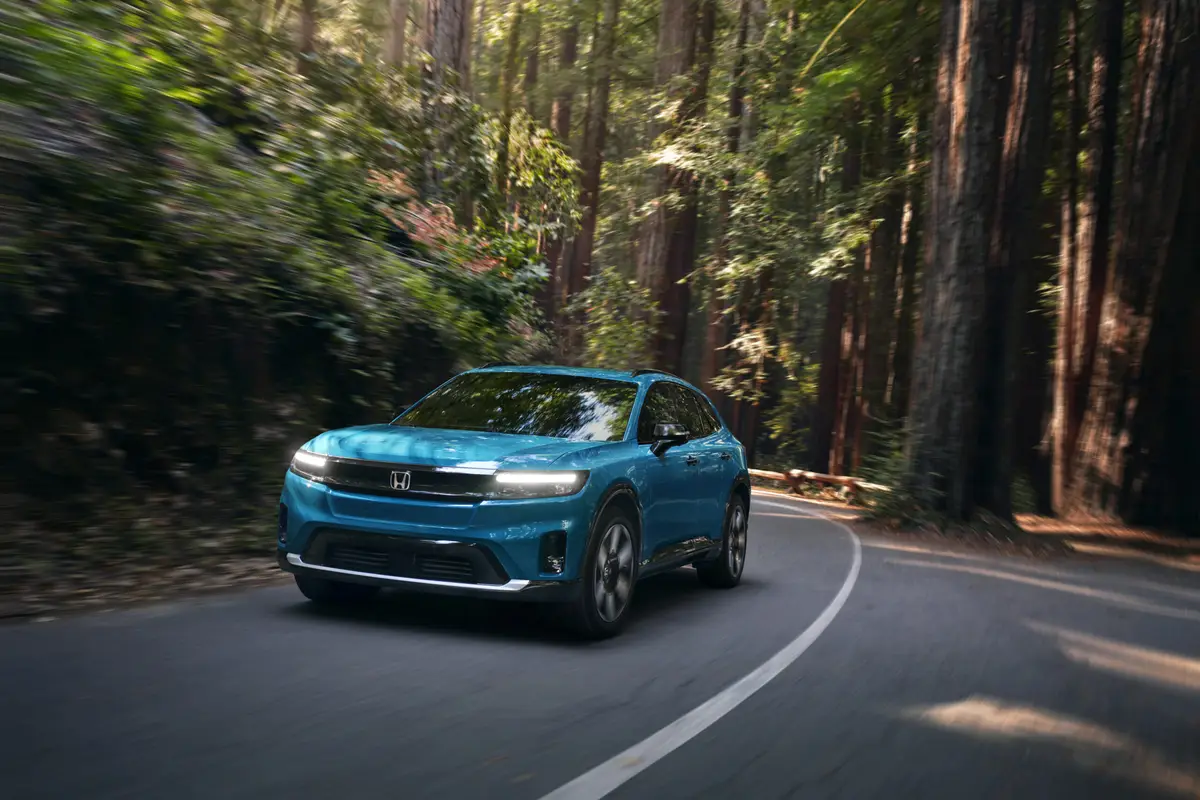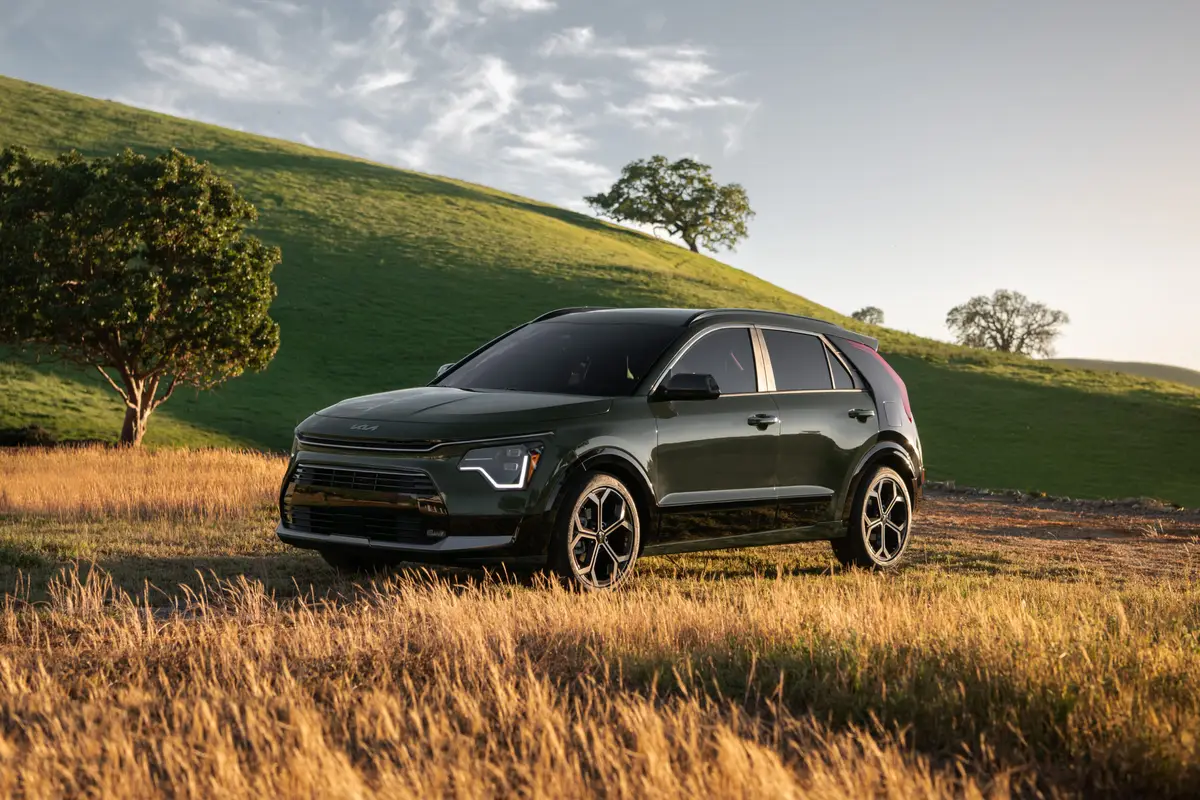chicagotribune.com's view
Coupe sales, we are told, are slipping slowly but steadily down theporcelain bowl.
Yet Mercedes-Benz, noted assembler of luxury sedans, has introduced a coupefor 1998, a two-door CLK to join the C280 and C230 sedans in its compactlineup.
Have the marketing folks back in the homeland overdosed on sauerkraut?
Doesn’t make a lot of sense until you see the CLK game plan and its effecton Mercedes’ longer-range plans, which are to:
Introduce a CLK coupe powered by a new 3.2-liter, 215-horsepower, V-6engine teamed with a 5-speed automatic for 1998, the same power plant offeredin the new 1998 ML320 sport-utility vehicle. Follow up the V-6 with a more potent CLK for 1999 with a 4.3-liter,302-h.p. V-8. Add a CLK cabriolet, or convertible, powered by the 3.2-liter V-6. Introduce a C43 C-Class sedan at the Chicago Auto Show in February(before putting it on sale in the spring) for performance-minded sedanenthusiasts. Like the V-8 coupe, the C43 sedan will ride on 17-inch tires andbe powered by the 4.3-liter V-8, as will the ML430 in the 1999 model year,when the 4.3-liter V-8 replaces the current 4.2-liter, 275-h.p. V-8 thatMercedes offers in some of its vehicles.
Now things are starting to make sense, at least more sense than with just aV-6-powered CLK.
It also makes sense, insiders say, in that rival BMW holds a slight edge inattracting so-called performance enthusiasts because it offers a 3-Seriescoupe and convertible. So Mercedes has to respond with a CLK coupe and soonthe convertible.
Enthusiasts are also attracted by roadsters. And though Mercedes offers theluxury-minded SLK, BMW offers the performance-oriented Z3.
Mercedes expects to sell about 9,000 CLKs for ’98. No word on how many ’99convertibles or ’99 V-8s, though we suspect that once those two arrive, salesof V-6 CLKs probably will decline. The C43 will be a limited-edition number.
The ’98 CLK we tested is called an entry-level coupe. It is built on thesame wheelbase but is 3 inches longer than the C-Class sedans, which have beenrestyled and now sport front ends that look like those on the larger and moreexpensive E-Class sedans. The CLK starts at $39,850.
As is typical with coupes, the strength is styling, the drawback isrear-seat room. Head and legs suffer in CLK steerage class.
Yet the coupe is packed with technological goodies, such as a FlexibleService System that tells you when it’s time to change oil based not only onmiles driven, but also on engine loads and vehicle speeds. That means extendedintervals if you drive light-footed, shorter ones if the foot islead-encrusted. FSS is standard in all V-6 Benzes for ’98.
Also, the anti-lock brake system has been upgraded to include Brake AssistSystem, or BAS, which means that when sensors detect panic braking (based inpart on deceleration rate in releasing the gas pedal and speed of applying thebrake pedal), AB S is automatically applied.
Mercedes says BAS reduces stopping distance by 45 percent. We hope thosefollowing a BAS-equipped Mercedes will realize how quickly the car can stopand give it some space. Vehicles with BAS should carry a BAS label–but don’t.All Mercedes passenger cars offer BAS as standard for 1998, except the SLKroadster, which adds it 1999. The all-wheel-drive ML320 doesn’t offer BAS.
The CLK (and all Mercedes cars and M-Class SUVs) comes with dual front andside-impact air bags. The side bags are mounted in the doors. Safety expertsargue that mounting the bags along the side of the seat is better because thebags then move when you adjust the seat, but Mercedes hasn’t bought into thatargument.
The CLK also comes with Baby Smart, a sensor in the passenger seat thatdetects when a child safety seat is upfront to deactivate the passenger airbag. A light in the console warns that the bag has been deactivated. BabySmart is in all Mercedes cars (n t the ML320). But you must buy a Mercedesinfant seat at $140 to $160, which works in tandem with the sensors in thepassenger seat.
CLK offers ASR, or Automatic Slip Reduction (standard in all Mercedes ’98cars except the C-230). It’s traction control.
ESP, or Electronic Stability Program, is an upgrade to the ASR that notonly prevents wheel lockup on slippery surfaces, but also prevents skids orspins when understeer or oversteer gets the motorist in trouble, such as whentaking a corner too fast. ESP is a $1,300 option purchased separately or partof a $1,950 package that includes high-intensity headlamps, headlamp washersand rain-sensing wipers.
CLK also uses “smart key,” which looks like a typical ignition key fobexcept it’s bigger and the key blade is missing.
Instead, the fob has a short, stubby square plastic head that fits into ashallow square plastic hole in the instrument panel, where you find theignition. When the square head is put in the hole and the fob twisted, the carstarts.
It takes some getting used to not seeing a key blade. But, since the doorsand trunk lid still use a key–at least for now–the fob contains a metalblade. You press a clip on the fob and a metal key slips out of the holder tolock/unlock the doors and trunk.
Word of warning, however. When you buy the car, you get only two fobs. Losethem both, and you have to go to the dealer–when it’s open–for areplacement. Also, the fob is rather cumbersome to carry in a pocket. We hopeMercedes comes up with a smaller design.
Smart key is offered in the CLK, SLK and C-Class sedans for 1998 and willspread to other models for 1999.
Lots of goodies in the CLK, but what about such factors as performance? The 3.2-liter V-6 is smaller and lighter than the 3.2 inline 6 Mercedes hadbeen offering. Smaller and lighter mean less costly.
And the 3.2 V-6 gets 10 percent better mileage than the inline 6 though itdevelops aboutthe same h.p.–215 versus 217. Not only does it burn less fuel,it also burns it more cleanly so fewer pollutants escape into the air.
The 3.2 V-6 will propel you easily off the line, but the 4.3-liter V-8coming for 1999 probably will grind you deep into the leather-bound bucketseat at takeoff.
Ride is smooth, handling very good, but the CLK leans more toward the feelof a luxury SL roadster than it does a sports car. Also, don’t expect it toperform like a steroid-laden SLK.
Based on Mercedes’ projections, the CLK is for the 40-year-old earning$75,000 to $150,000 who wants to tool around, with a passenger, in relativecomfort.
While a compact, the CLK is very roomy upfront, tight in back. Nice touches include dual heater/air controls for driver/passenger, and alever in the spacious trunk that you can pull to release the rear seat backsfor even more stowage.
While the CLK is called an entry-level coupe, the price of entry rises asyou tack optio ns onto that $39,850 base. For example, the optional powermoonroof runs $1,110 purchased separately or $1,290 as part of a package thatincludes a power rear-window sunshade (press a button and it motors up tocover the glass, push the button and it motors down to expose the glass) andautomatic dimming mirrors. Heated seats run $595 and a ski sack pass-throughfrom rear seat to trunk runs $175. Add a phone and compact-disc player, a$1,495 or $1,895 package depending on integrated or portable phone, and youare approaching $45,000.
Hmm. What is that convertible going to cost?
Besides the CLK and redesigned C-Class with new 3.2-liter V-6, Mercedesalso has come out with a E320 station wagon. You can add the all-wheel-drivesystem standard in the M-Class SUV as an option to the E-Class wagon or sedanwith V-6 engine for $2,750.
>>1998 Mercedes-Benz CLK coupe Wheelbase: 105.9 inches Length: 180.2 inches Engine: 3.2-liter, 215-h.p. V-6 Transmission: 5-speed automatic EPA mileage: 21 m.p.g. city/29 m.p.g. highway Base price: $39,850 Price as tested: Includes $1,950 for ESP (electronic stability control,upgrade from traction control), high-intensity headlamps, headlamp washers,rain sensing windshield wipers; $1,290 for power moonroof, rear powersunshade, automatic dimming mirrors; $595 for heated seats; and $175 for skisack pass-through rear seat to trunk. Add $595 for freight. Pluses: New coupe for C-Class. New, more-responsive V-6. Brake assistsystem reduces stopping distances 45 percent in emergency. Baby Smart seattells whether there’s a child seat upfront to deactivate the air bag. “Smartkey” does away with key blade in ignition. Dual front and side-impact airbags, ABS and traction control standard. Minuses: Typical tight coupe room in back. For Baby Smart to work, youmust buy Mercedes baby seat at $140 to $160. >>
Latest news



